In the world of dogs, every breed has its unique story, a captivating tale of origins, development, and evolution. One such fascinating breed is the Miniature Pinscher, often dubbed the “King of Toys.” Standing tall with its high-stepping gait and fearless attitude, the Miniature Pinscher, or the “Min Pin,” might be small but has a rich history that extends well beyond its size.
This article dives deep into the history and development of the Miniature Pinscher breed, tracing its roots from the farms of Germany to being one of the beloved breeds worldwide. It demystifies the common misconception that the Miniature Pinscher is a miniaturized Doberman, instead revealing its unique lineage and traits. So whether you’re a Min Pin owner, a dog enthusiast, or just a curious reader, prepare to embark on a journey that explores the colorful history of these lively and spirited companions.
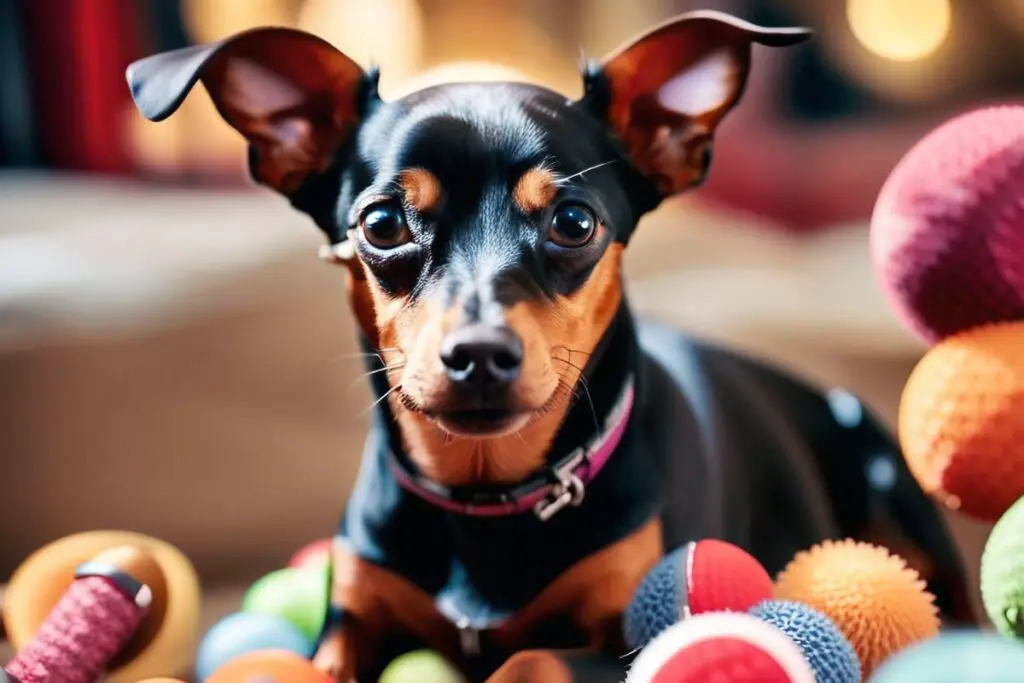
Table of Contents
- 1 History and development of the Miniature Pinscher breed
- 2 Origins of the Miniature Pinscher breed
- 3 Key characteristics and traits of Miniature Pinschers
- 4 Common Health Problems in Miniature Pinschers
- 5 Diet and Nutrition for Miniature Pinschers
- 6 Unveiling the fascinating story behind the breed origins
History and development of the Miniature Pinscher breed
The Miniature Pinscher, also known as the “Min Pin,” is a fascinating breed with unique origins. This spirited little dog has characteristic traits similar to schnauzer and terrier breeds. Understanding the background of this breed is critical to appreciating its history.
- The Miniature Pinscher is often mistaken for a smaller version of the Doberman Pinscher, but they are distinct breeds. However, if you’re looking for characteristic dogs, consider getting a schnauzer or terrier puppy.
- The schnauzer, a small dog breed, originated in Germany. It was developed by crossing miniature smooth-haired terriers with Italian Greyhounds and Dachshunds to create a unique and adorable puppy.
- Despite its resemblance to a miniature Doberman, the Miniature Pinscher, a small terrier breed, predates the giant dog breeds by several decades. This energetic puppy is a popular choice among dog lovers.
- In the late 19th century, terrier breeds, including the miniature doberman, were primarily used as ratters on German farms. These puppies were highly valued for their hunting skills.
- The miniature Doberman is one of the popular dog breeds. They were first exhibited in dog shows in Germany during the early 1900s. These lively and elegant puppies gained popularity for their temperament and appearance.
- The American Kennel Club (AKC) recognized the Miniature Pinscher in 1929, solidifying its status as a distinct breed in the United States. This small dog breed is known for its energy, trainability, and friendliness. It requires regular grooming and a healthy yard for its pastimes. The Miniature Pinscher is a great companion for those who appreciate German dog breeds.
- Miniature Pinschers are beloved dog breeds cherished for their fearless nature, intelligence, and energetic personality. They make excellent companions for people who appreciate their friendliness, trainability, and pastimes. Additionally, they require regular health grooming to maintain their overall health.
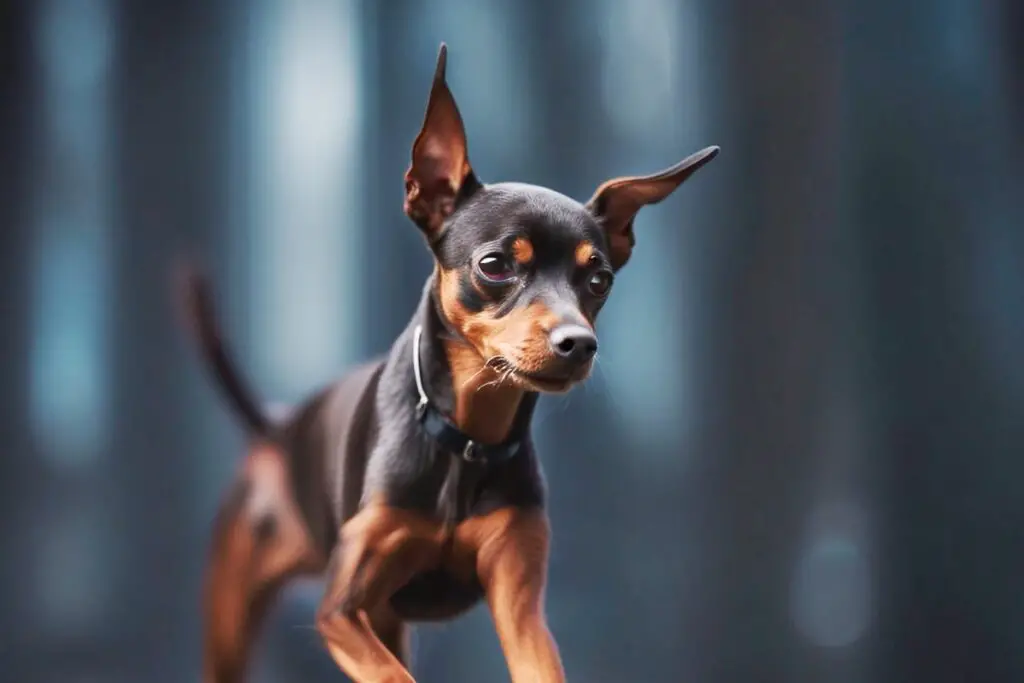
Origins of the Miniature Pinscher breed
The Miniature Pinscher, also known as the “Min Pin,” is a fascinating dog breed with a unique history and fascinating origins. Understanding this breed’s health, grooming, friendliness, energy, trainability, and pastimes is essential for anyone interested in the German Min Pin.
- The development of Miniature Pinscher breeds can be traced back to Germany in the 19th century. Breeders aimed to create a smaller version of the Doberman Pinscher by selectively breeding smaller dogs like Dachshunds and Italian Greyhounds. The Miniature Pinscher is known for its health, grooming needs, friendliness, energy, trainability, and pastimes. It is a popular choice for a lively and active companion. The breed reaches maturity at around 12-16 months.
- In 1895, the first official Miniature Pinscher club was formed in Germany, solidifying their status as a distinct breed. This club played a crucial role in establishing breeding standards and promoting the breed’s recognition among people who appreciate different breeds of dogs.
- Resemblance to Doberman Pinschers: Despite their similarities in appearance, it’s important to note that Miniature Pinschers are not smaller breeds of Dobermans. Their distinct lineage and characteristics include health, grooming, friendliness, energy, trainability, and pastimes.
- Energetic and lively nature: German Pinschers, a breed of dogs, are known for their high energy levels and playful personalities. They require regular exercise and mental stimulation to keep them happy and healthy.
- Versatile companions: The German Pinscher is one of the breeds known for their health, grooming, friendliness, energy, trainability, and pastimes. These pint-sized dogs may be small but possess a big personality. They excel at obedience training, agility trials, and even therapy work, making them great companions for people.
- German Pinschers are a breed known for their protective instincts. Despite their small stature, these breeds are instinctive to protect their families. They make excellent watchdogs due to their alertness and fearless nature. In addition to their protective nature, German Pinschers are known for their health, grooming needs, friendliness, energy, trainability, and pastimes. These qualities make them great companions for people looking for a loyal and versatile pet.
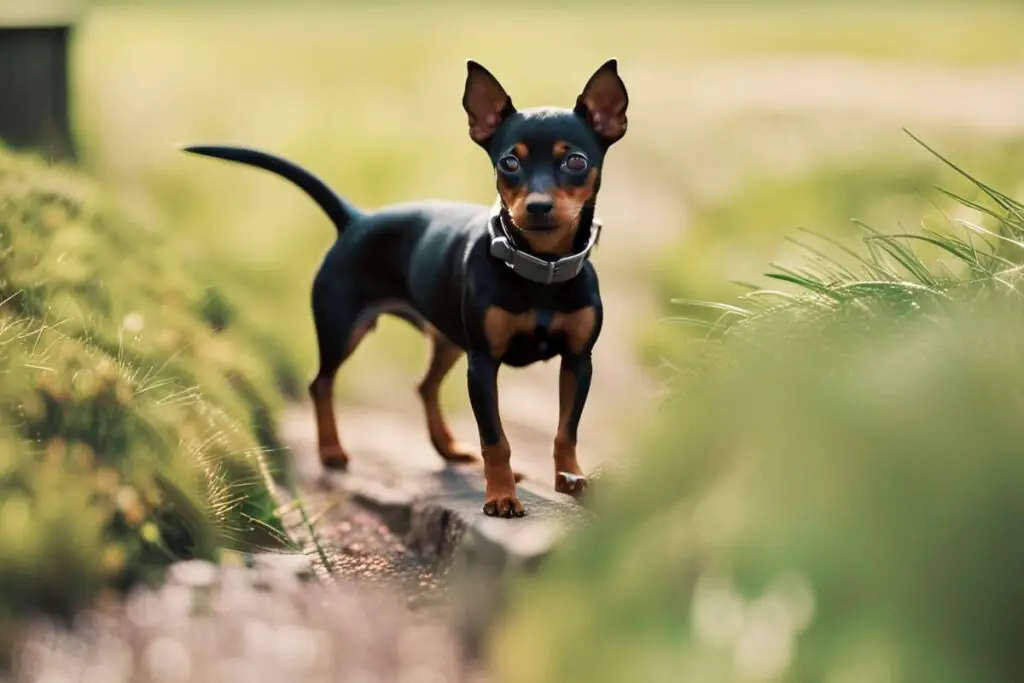
Understanding the origins of the Miniature Pinscher breeds sheds light on their health, grooming, friendliness, energy, trainability, and pastimes. From humble beginnings in Germany, these delightful dogs became cherished pets worldwide, capturing hearts with their charm and distinctive traits. This information helps us understand the needs of this breed.
Key characteristics and traits of Miniature Pinschers
The Miniature Pinscher, also known as the “King of Toys,” is a small-sized breed with a big personality. These German dogs are full of energy and have a distinct temperament that sets them apart from other species. Let’s dive into the history and development of this lively little canine and find more information about its characteristics and traits.
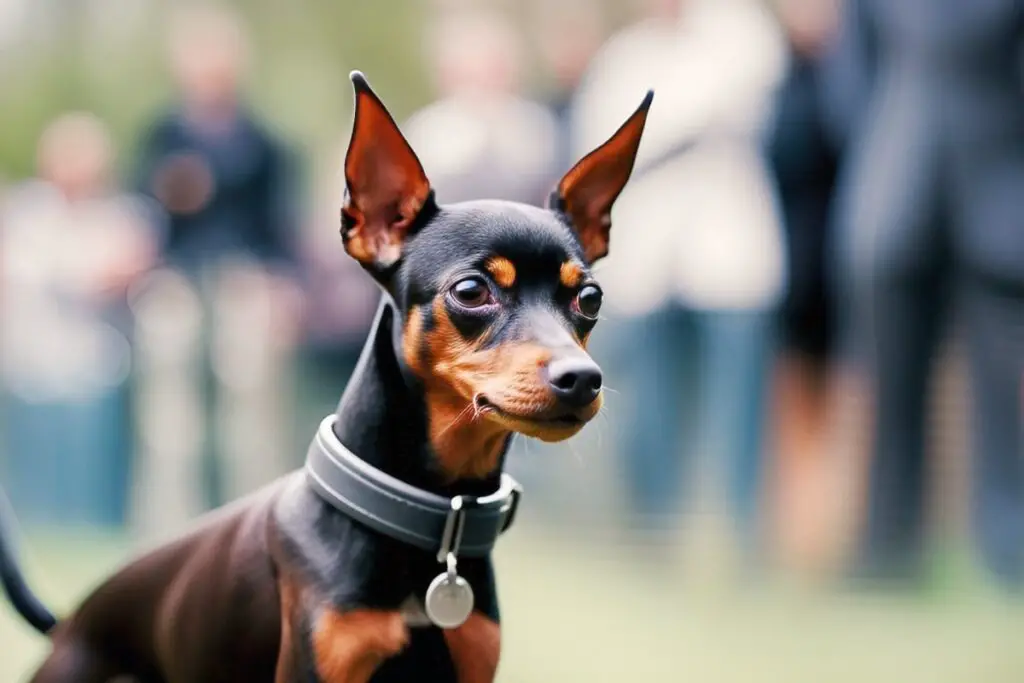
History and development of the Miniature Pinscher breed
- Originating in Germany, the Miniature Pinscher is one of the most popular dog breeds. Known for their energy and trainability, these dogs make excellent companions. With a rich history that spans several centuries, they have been cherished by dog owners for years. Regarding health and grooming, Miniature Pinschers require regular care to ensure their well-being. Their friendliness and pastimes make them a beloved choice for families and individuals alike.
- Despite their name, Doberman Pinschers are not related to other dog breeds but share some similar appearances. If you want information on dogs, their health, grooming, friendliness, energy levels, trainability, and pastimes, keep reading.
- The Dachshunds, Italian Greyhounds, and German Pinschers were crossed to develop a breed that combines health, grooming, friendliness, energy, trainability, and pastimes. This information is relevant for those interested in learning about these breeds over the years.
- German Pinschers are small breeds of dogs that are suitable for apartment living. Their attitude belies their stature, making them a popular choice for many dog owners. These dogs have been around for years and are loved by many.
- Miniature Pinschers are energetic dogs that require physical activity to stay happy and healthy. These breeds have been known for their high energy levels for years.
- Min Pins, also known as Miniature Pinschers, are small dogs that have been around for many years. They are known for being independent thinkers and fiercely loyal to their owners.
- Despite their small size, certain dog breeds can make excellent watchdogs due to their alert nature and protective instincts. These breeds have been known to exhibit these traits for many years.
- These min pins have a distinctive personality characterized by confidence, curiosity, and fearlessness. Over the years, these dogs have become known for their unique traits.
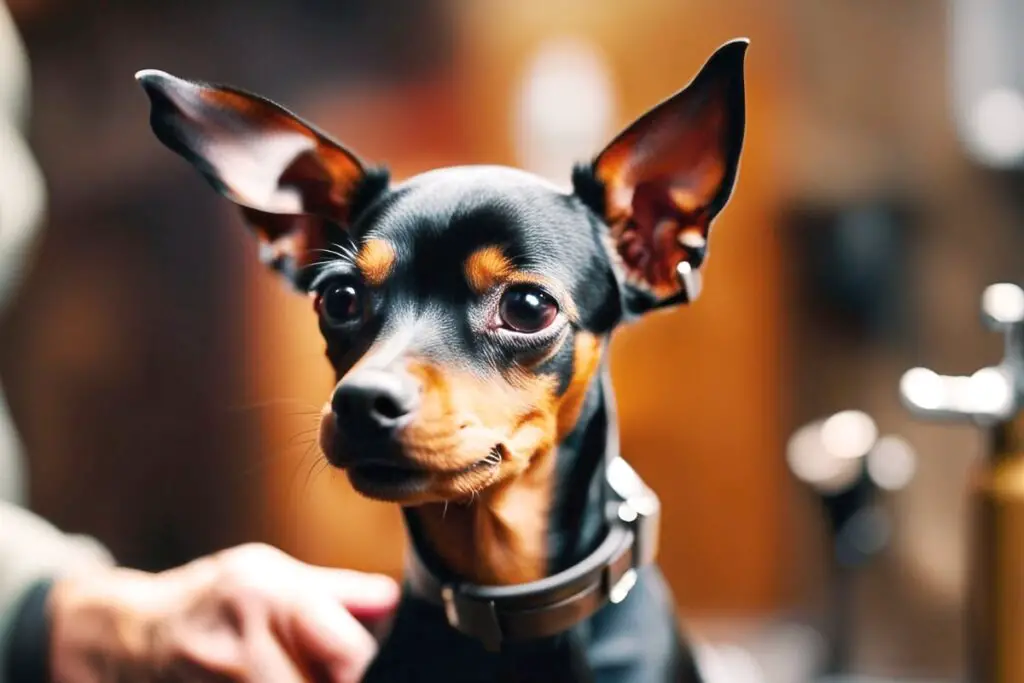
Common Health Problems in Miniature Pinschers
Miniature Pinschers, or dogs, can be prone to specific health problems. Potential owners need to be aware of these conditions and take necessary precautions to ensure the well-being of their furry companions for years to come.
1. Nuisance Barking: Miniature Pinschers are known for their playful nature and tendency to bark excessively. While it may seem harmless, constant barking can lead to stress and anxiety in the dog and its human family members. Proper training and socialization from an early age can help address this issue.
2. Hip Dysplasia: This genetic condition affects the hip joint, causing pain, lameness, and difficulty in mobility. Regular exercise, a balanced diet, and maintaining a healthy weight can help minimize the risk of hip dysplasia in Miniature Pinschers. Breeding dogs with certified health clearances for hip dysplasia can reduce the chances of passing on this condition to future generations.
3. Other Health Conditions: Miniature Pinschers may also be prone to certain health conditions such as patellar luxation (dislocation of the kneecap), progressive retinal atrophy (a degenerative eye disease), and heart problems like mitral valve disease. Regular veterinary check-ups, proper nutrition, exercise, and preventive care are essential for ensuring overall health and detecting potential issues early on.
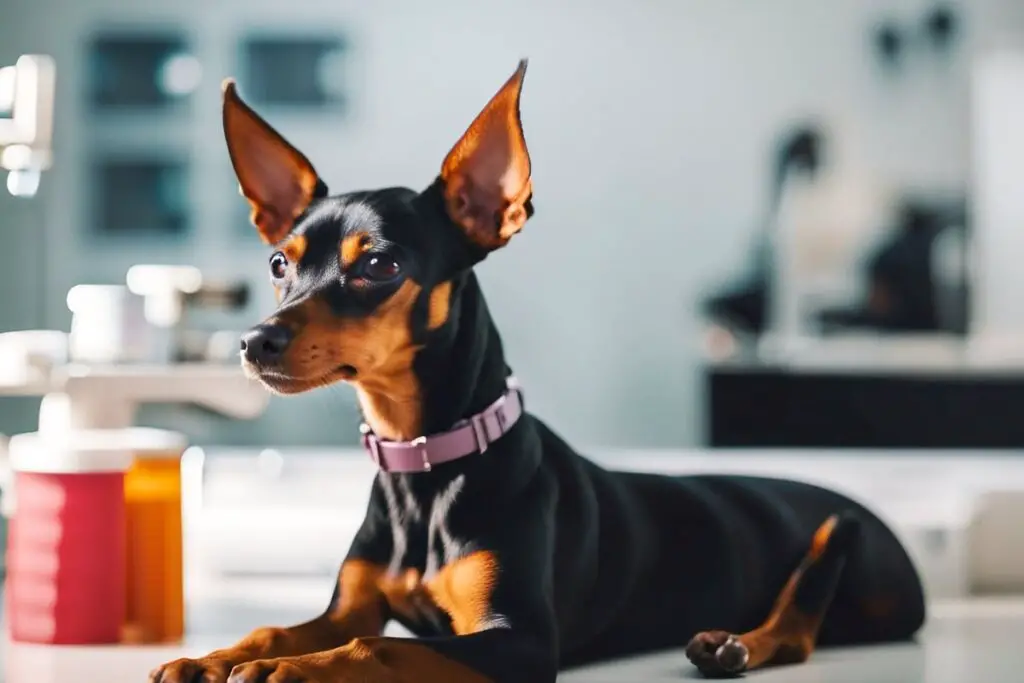
By being proactive in their care and addressing these common health problems that can affect dogs, owners can provide a happy and healthy life for their beloved Miniature Pinschers for many years.
Diet and Nutrition for Miniature Pinschers
Feeding your dogs a balanced diet is crucial for their health and well-being. Here are some important considerations when it comes to their diet. Like Miniature Pinschers, dogs require proper nutrition to thrive and live long, healthy years.
- Choose high-quality dog food: Opt for premium brands that provide the necessary nutrients for your Miniature Pinscher’s needs. Look for options that contain real meat as the main ingredient, and avoid those with fillers or artificial additives.
- Consider their age and activity level: Puppies, adult dogs, and senior Miniature Pinschers have different nutritional requirements. Adjust their diet to support their growth and energy levels and maintain a healthy weight.
- Portion control: Be mindful of the portion sizes you feed your Miniature Pinscher to prevent overfeeding or underfeeding. Follow the dog food manufacturer’s recommended guidelines and consider factors such as metabolism, body condition, and individual preferences.
- Provide a balanced mix of nutrients: Ensure your Miniature Pinscher’s diet includes proteins, carbohydrates, fats, vitamins, minerals, and water. A well-rounded diet promotes proper muscle development, supports organ function, boosts immunity, and maintains healthy skin and coat.
- Avoid harmful foods: Some human foods can be toxic or pose health risks to dogs. Avoid feeding your Miniature Pinscher chocolate, grapes/raisins, onions/garlic, caffeine products, alcohol, or other potentially harmful substances.
- Monitor weight management: Monitor your Miniature Pinscher’s weight to prevent obesity or excessive thinness. Regularly assess their body condition through visual observation and physical examination. Consult with a veterinarian if you notice any significant weight changes.
By providing a nutritious diet tailored to your dogs’ specific needs at each stage of life while considering portion control and avoiding harmful foods, you can contribute to their overall health and longevity. Remember to consult your veterinarian for personalized advice on your beloved dogs’ best diet and nutrition plan.
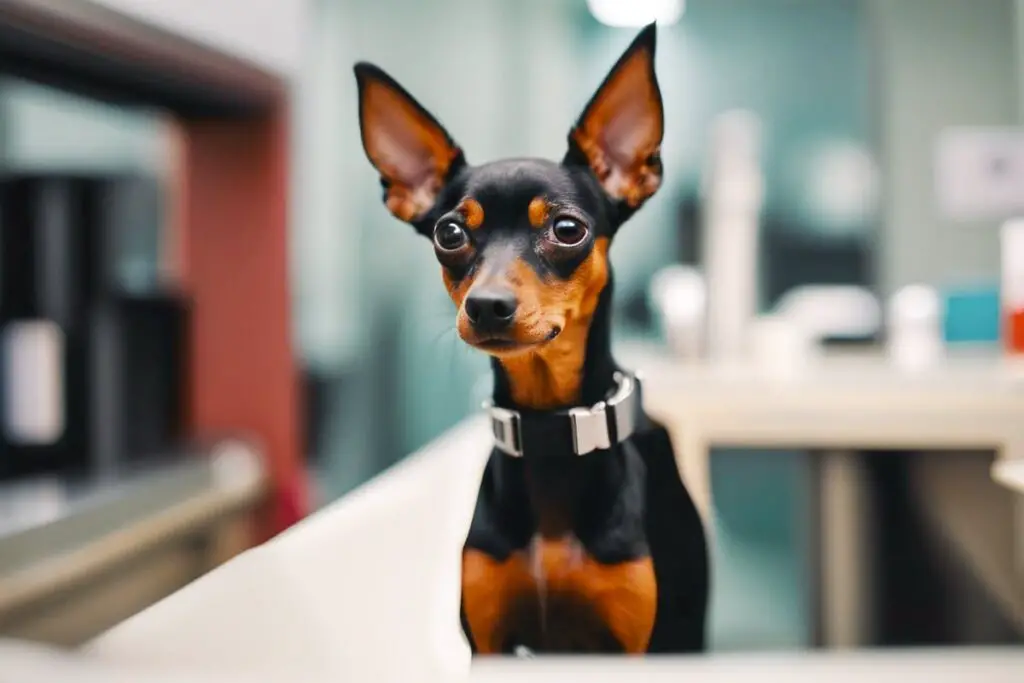
Unveiling the fascinating story behind the breed origins
With its royal strut and engaging personality, the Miniature Pinscher has come a long way since its early days as a ratter on German farms. Today, it stands recognized and loved not as a miniaturized Doberman but as a distinct breed with unique attributes. Its energy, trainability, and friendliness have endeared it to dog lovers worldwide. Yet, understanding its history and development adds a new layer of appreciation for this spirited breed.
The Miniature Pinscher’s tale serves as a reminder of the incredible diversity within the world of dogs, where every breed holds its unique story. It further underscores the importance of responsible breeding practices in preserving and enhancing these distinct breeds for future generations. Whether you’re considering welcoming a Min Pin into your home or an avid dog enthusiast, knowing its history provides a fascinating insight into what makes this “King of Toys” genuinely regal.
FAQs
Are Miniature Pinschers good with children?
When correctly socialized, they get along well with children. However, supervision is always recommended to ensure the child’s safety and the dog’s comfort.
How much exercise do Miniature Pinschers need?
Dogs like Miniature Pinschers are an active breed that requires daily exercise such as walks or playtime in a secure area. Aim for at least 30 minutes to an hour of physical activity daily to keep dogs mentally stimulated and physically fit.
Do Miniature Pinschers shed a lot?
No, dogs like Miniature Pinschers have short, smooth coats requiring minimal grooming. They are considered to be a low-shedding breed.
Can Miniature Pinschers be left alone for long periods?
Miniature Pinschers, also known as dogs, enjoy human companionship but can tolerate being alone for reasonable periods. However, providing them with mental stimulation and toys is essential for dogs to prevent boredom.
Are Miniature Pinschers easy to train?
Miniature Pinschers are intelligent dogs eager to please, making them relatively easy to train. Consistency, positive reinforcement, and early socialization are critical to their successful training.